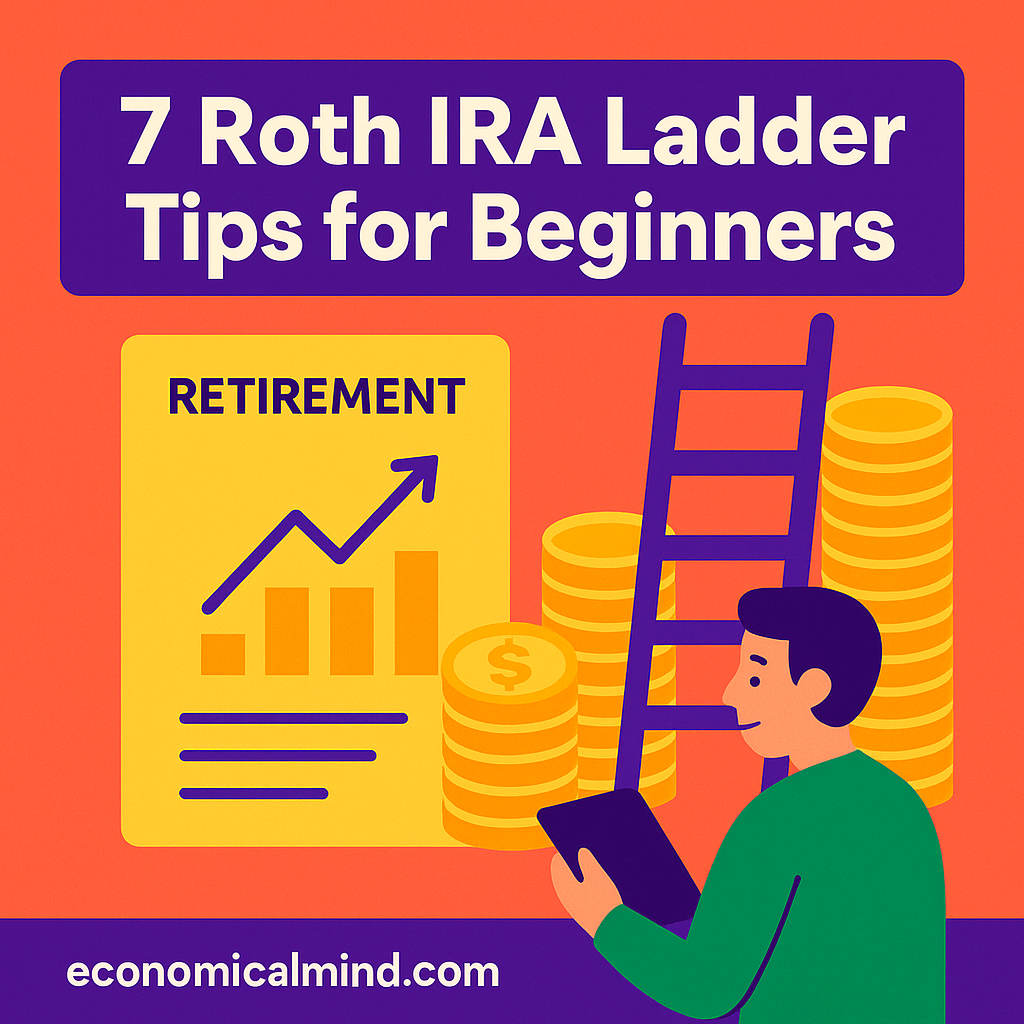
What Is a Roth IRA Ladder?
A Roth IRA ladder is an advanced yet beginner-friendly strategy that lets you access your retirement savings before age 59½ — without paying taxes or penalties.
It’s popular among FIRE (Financial Independence, Retire Early) enthusiasts because it allows you to withdraw contributions and converted funds strategically over time, providing flexibility while keeping your money growing tax-free.
In simple terms: it’s how smart investors retire early without breaking IRS rules.
1. Understand How Roth IRA Withdrawals Work
Before setting up a ladder, it’s crucial to know what’s taxable and what’s not.
In a Roth IRA:
- Contributions can always be withdrawn tax-free and penalty-free (since you’ve already paid taxes).
- Earnings are tax- and penalty-free only after age 59½ and once the account has been open for at least five years.
- Conversions (from a Traditional IRA or 401(k)) must wait five years before they can be withdrawn penalty-free.
This five-year rule is the foundation of the ladder strategy.
2. Start Converting Early
To build a Roth IRA ladder, start converting funds gradually from a Traditional IRA or 401(k) into a Roth IRA.
Each conversion creates its own “rung” on the ladder, with a separate five-year waiting period before it becomes tax-free.
Example:
- Convert $10,000 from your 401(k) in 2024 → withdraw in 2029
- Convert another $10,000 in 2025 → withdraw in 2030
By repeating this process annually, you create a steady stream of tax-free income later.
3. Manage the Tax Impact
Each Roth conversion counts as taxable income for that year.
If you convert too much at once, it could push you into a higher tax bracket.
To minimize taxes:
- Spread conversions over multiple years
- Focus on years with lower income (like early retirement or sabbaticals)
- Avoid converting so much that you lose key tax credits or health subsidies
Smart tax management can save you thousands over the life of your ladder.
4. Maintain a 5-Year Cushion
Because of the five-year waiting period, you’ll need to plan ahead.
If you want to retire early at 45, start your conversions at 40 — so your first rung matures right on time.
During that gap, rely on other savings (like a taxable brokerage account) to cover expenses while your ladder “ripens.”
Think of it as building a bridge to early retirement.
5. Use a Taxable Account as a Bridge Fund
While waiting for your Roth conversions to mature, use a taxable brokerage account to fund your lifestyle.
This allows you to:
- Access dividends and long-term capital gains at lower tax rates
- Keep your Roth IRA untouched and compounding tax-free
- Transition smoothly into Roth withdrawals once they’re available
A well-planned taxable account ensures you never have to tap your Roth early.
6. Keep Contributing to a Roth IRA
Even while building your ladder, continue making annual contributions if you qualify.
For 2025, the limits are:
- $7,000 per year (under 50)
- $8,000 per year (50 or older)
Regular contributions — unlike conversions — can be withdrawn anytime, tax-free, giving you even more flexibility.
7. Track Every Conversion Carefully
Each conversion has its own five-year clock. Keeping organized records ensures you don’t withdraw too soon and face penalties.
Use a simple spreadsheet or financial app to log:
- Conversion amount
- Conversion date
- Withdrawal-eligible date
Staying organized helps you manage multiple rungs confidently and tax-efficiently.
Bonus Tip: Get Professional Advice
Roth IRA ladders are powerful but require careful planning.
A qualified CPA or financial advisor can help you:
- Optimize conversion amounts
- Avoid overpaying in taxes
- Align your ladder with long-term income goals
A single session with a professional can save you thousands in tax mistakes.
Final Thoughts
A Roth IRA ladder is one of the smartest ways to retire early with minimal taxes and maximum flexibility.
By converting gradually, maintaining a five-year cushion, and staying organized, you can create a reliable stream of tax-free income long before traditional retirement age.
It’s not about working longer — it’s about planning smarter.
